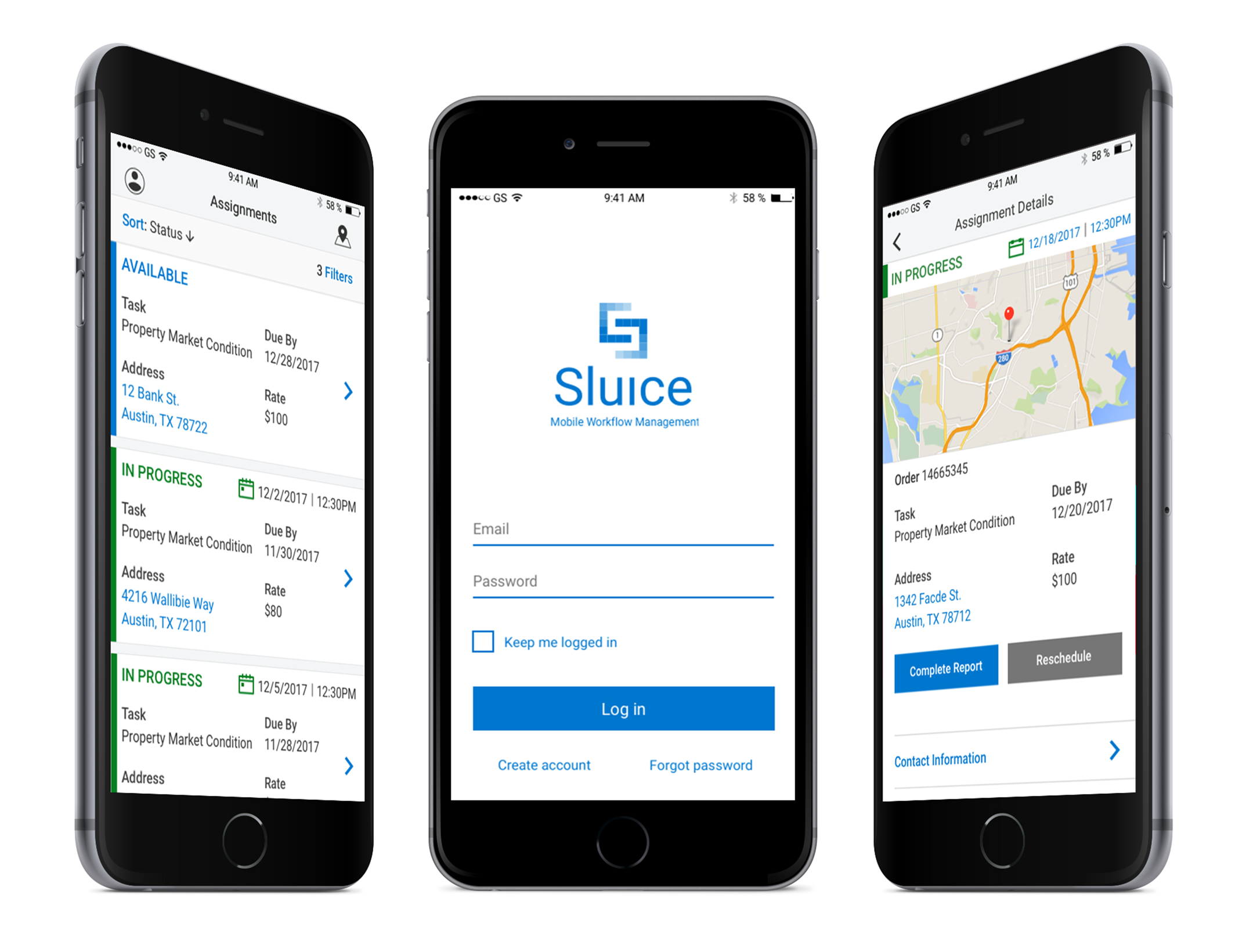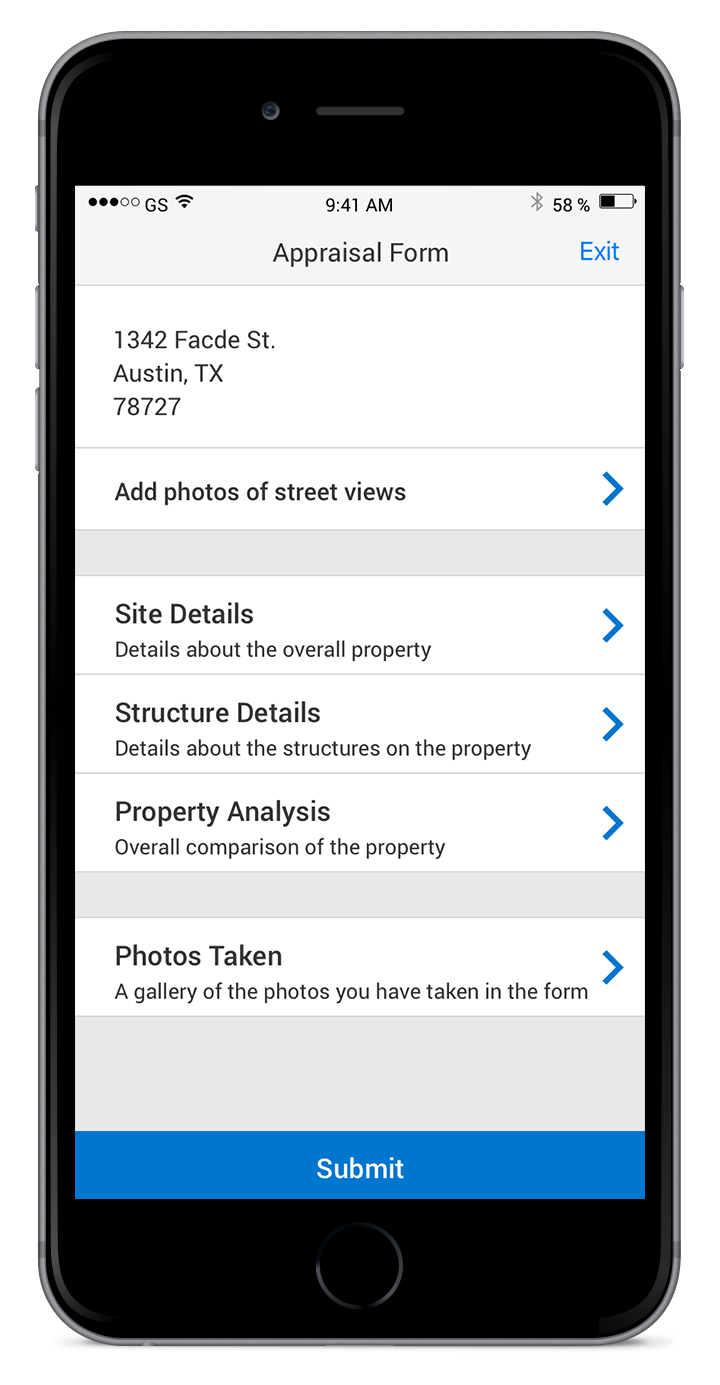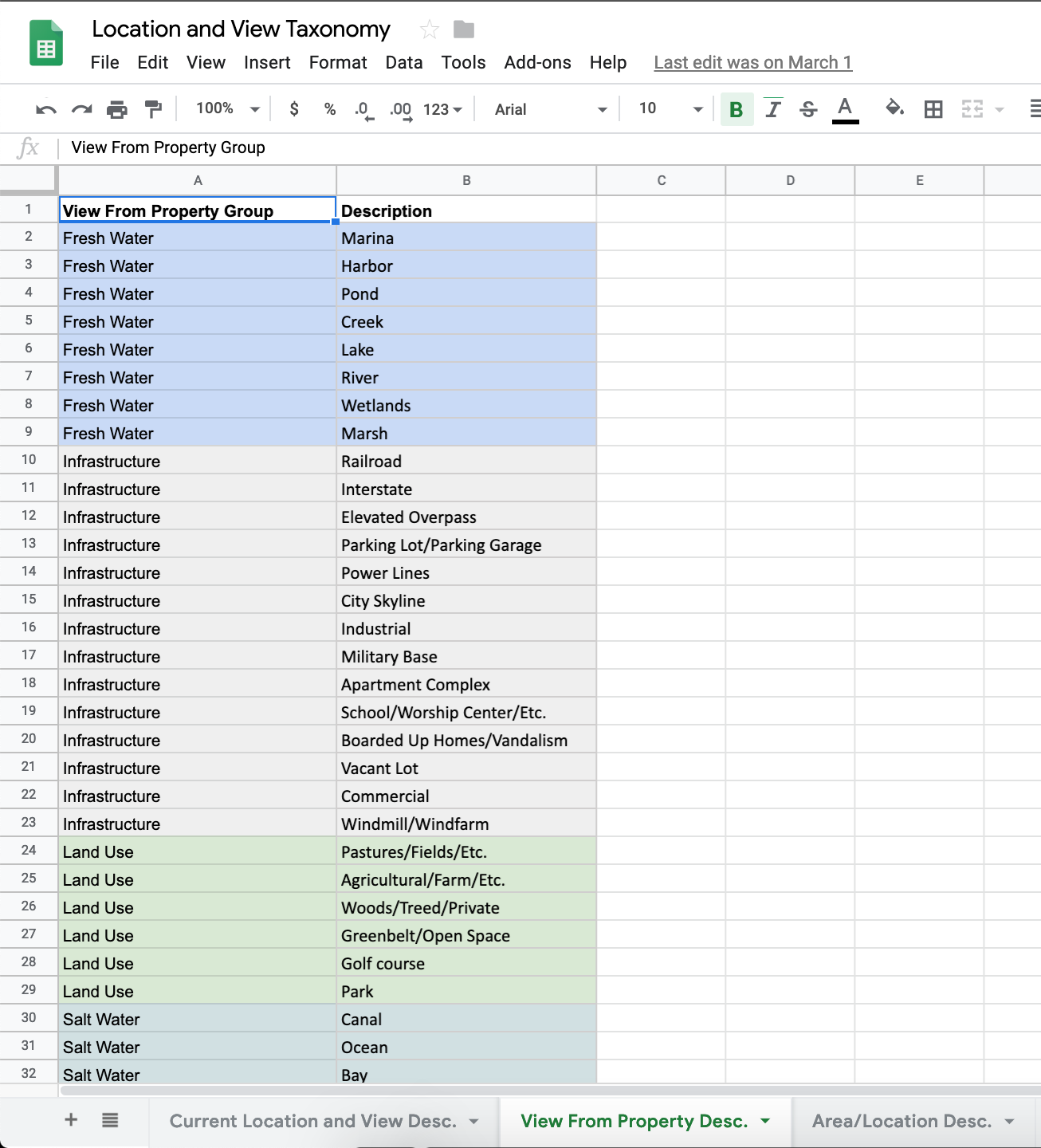Sluice - Mobile Workforce Management App
Simplifying mobile workforce management.
Overview
As the Lead UX/UI designer on the project, I was tasked with designing an app that allowed companies to manage their mobile workforces with any database environment. I wanted to focus on the lifecycle of orders, and features that would help improve the day-to-day of the mobile workforce.
Analysis
I began with a heuristic review of workflow management software and how the lifecycle of tasks were addressed. Then I interviewed 10 property inspectors and 10 home-improvement professionals on their day-to-day functions. I found that all used a GPS navigation app, a calendar and a messaging app.
Solutions
Workflow was streamlined by creating an inclusive experience which aided in efficiency. By using the RITE process we were able to discover quickly mental model discrepancies and make the needed corrections. I helped align business stakeholders and engineering with a thorough information architecture solution. In the end we delivered a successful application that increased end to end production by up to 30% with high adoption and high retention.


An Inclusive Experience
Seeing how many of the inspectors use their mobile devices and the multiple applications it took to complete and manage their tasks, I created features to promote an inclusive experience. In-app GPS navigation was added to aid in the ease of workflow from one site to the next. An integrated calendar feature allowed users to manage their appointments and deadlines in realtime without the need of additional application balancing. Also a secure messaging tool was added to streamline communication between the user and key people in the completion of each job.
Revolutionizing Home Appraisals
In addition to designing the management app, I was given the opportunity to work with Fannie Mae to help restructure the way home appraisals have been done for the past 40 years. The new bifurcated system would separate the process into two tasks, data gathering and appraisal writing. I focused on building a mental model of appraisers and meeting business requirements from Fannie Mae for their API.


Mapping Mental Models to Workflow
After interviewing 20 appraisers I discovered their mental model was spatially based, while Fannie Mae’s API data structure was hierarchically-based. To satisfy the requirements of Fannies API and the intuitive flow of appraisers, I worked with our server engineers to map the data into a spatially guided form. Fannie Mae was appreciative and elated with the work my team had accomplished.
Clarifying and Localizing Taxonomy
Some of Fannie’s API entry fields were not testing well in our contextual inquires. I looked at adding transparency and creating a more intuitive and localized naming convention based on regional vernacular. After the adjustments, we observed lower time on task and stronger qualitative feedback by participants.

Successful SUS
After 72 hours of interviewing 30 participants through contextual inquiries and usability testing, users were able to increase completion times of all job types by up to 30%. Also quality assurance was increased and SUS scores for the overall product gave us an A rating.